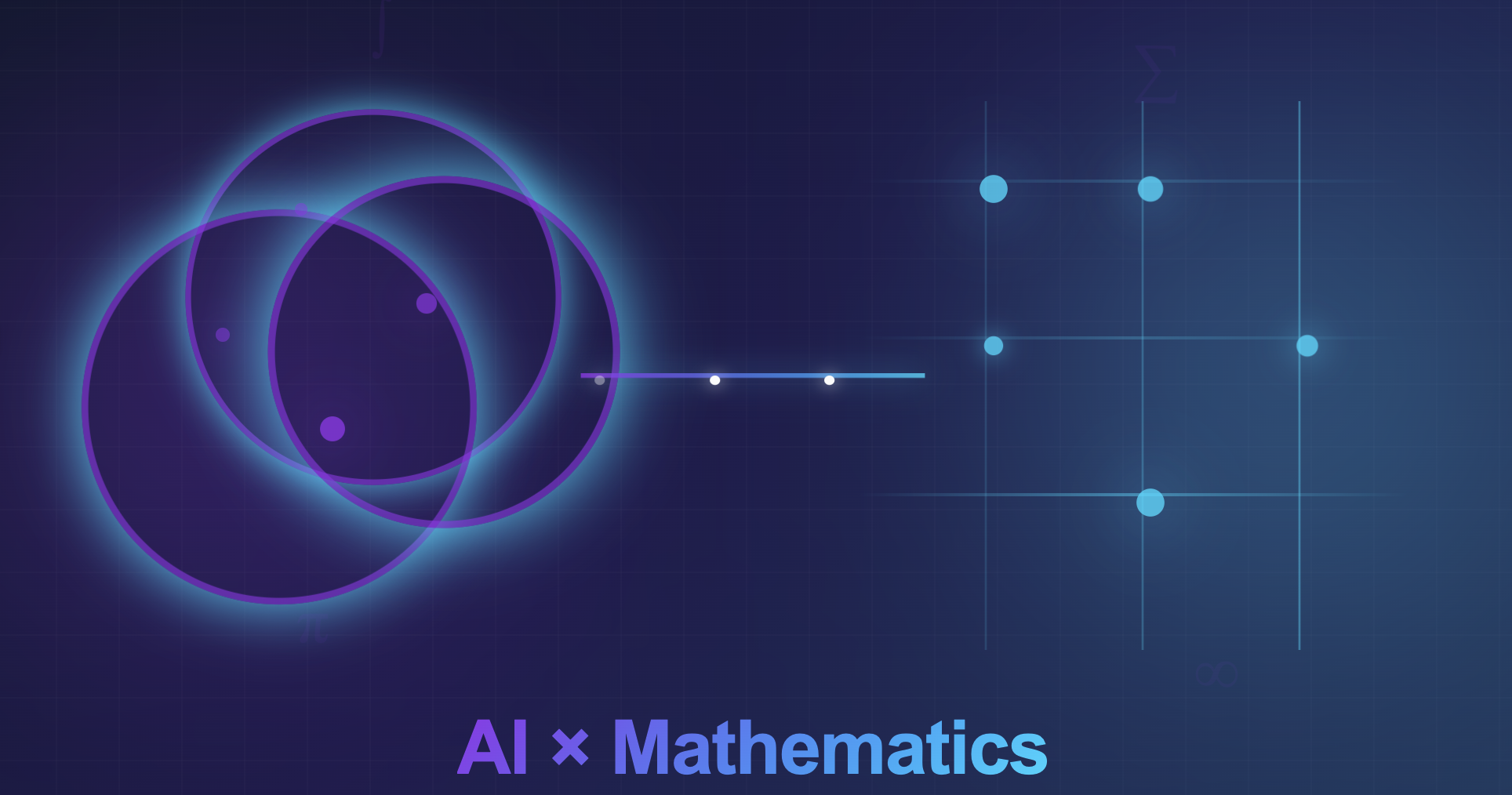The Future of Mathematics: When AI Meets Human Intuition
A reflection on Yang-Hui He's lecture at the Royal Institution

When you tell someone you're a mathematician these days, the conversation inevitably drifts to one question: "What do you think about AI?"
It's a fascinating shift. Not long ago, people would ask about string theory or quantum gravity. Now, AI dominates the discourse—and for good reason. We're standing at a pivotal moment in mathematical history, one that Yang-Hui He of the London Institute for Mathematical Sciences describes as potentially "the most exciting era of mathematics since the time of Euclid."
At Tsifrix, where we're building the future of AI-powered solutions, this intersection of artificial intelligence and pure mathematics resonates deeply with our mission. Let me share why this matters—not just for mathematicians, but for everyone building with AI.
Three Ways AI Is Transforming Mathematics
1. Bottom-Up: Building from First Principles
Mathematics has always been about building from axioms upward—a tradition dating back to Euclid's Elements around 300 BC. Fast forward to today, and we have Mathlib, a project that has formalized the entirety of undergraduate mathematics into machine-readable code.
Think about that: every theorem, every proof from years of mathematical education, now encoded and verified by machines. The Pythagoras theorem alone? About 100,000 lines of code.
Why does this matter? Because as Kevin Buzzard of Imperial College points out, we've reached a point where even papers in the prestigious Annals of Mathematics—which undergoes 2-3 years of rigorous peer review—can contain contradictory abstracts. At least one must be wrong.
Human mathematicians, no matter how brilliant, make mistakes. Machines, when properly programmed, don't.
2. Top-Down: Pattern Recognition at Scale
Here's where it gets really interesting.
In the 1960s, mathematicians Bryan Birch and Peter Swinnerton-Dyer used the EDSAC computer in the basement of Cambridge University to plot patterns in something called elliptic curves. From this computational experimentation, they formulated what's now known as the Birch and Swinnerton-Dyer conjecture—one of the seven Millennium Prize Problems, each worth $1 million.
Today, AI can analyze millions of data points that would take humans lifetimes to examine. He's own work with neural networks led to what's now called the "Murmurations Conjecture"—a problem raised by AI-human collaboration that has stumped the entire number theory community for three years.
As He beautifully puts it: "Mathematics is experimental science... we muck around and try to do things." AI just lets us muck around at an unprecedented scale.
3. Meta-Mathematics: Large Language Models Enter the Arena
This is perhaps the most controversial and exciting development.
In 2022, ChatGPT passed the Turing test. Think about that milestone for a moment. We can no longer reliably distinguish between human and machine conversation.
By 2024, AI systems won silver medals at the International Mathematical Olympiad—problems so difficult that even professional mathematicians struggle with them. In 2025? Gold medal.
But here's the real breakthrough: the FrontierMath project. He was part of a "secret meeting" of 30 mathematicians locked in a room in Berkeley, tasked with creating research-level problems designed to defeat AI. The result? Current language models can solve about 10% of these problems—questions that even specialists in the field would find challenging.
One mathematician sacrificed publishing their own research paper just to contribute a problem to test the AI.
The Birch Test: A New Benchmark
He and his colleagues have proposed what they call the "Birch Test" for AI-assisted mathematical discovery (playfully named after Bryan Birch). For an AI system to pass, it must be:
- Automatic: No human intervention during the process
- Interpretable: Producing conjectures humans can actually work with
- Non-trivial: Raising problems interesting enough for mathematicians to care about
So far? Nothing has fully passed this test. But we're getting remarkably close.
What This Means for Tsifrix
At Tsifrix, we're not building AI to replace human expertise—we're building it to amplify human potential. He's lecture perfectly captures this philosophy:
"The future of mathematics is clearly the human working in tandem with AI. We're not competing... we're trying to solve the most fundamental problems in mathematical discovery."
This is exactly our approach to enterprise AI solutions. Whether it's:
- Analyzing complex datasets to find patterns humans might miss
- Automating repetitive technical tasks so teams can focus on strategy
- Providing instant access to knowledge bases that would take hours to search manually
We're building tools that make human experts more effective, not obsolete.
The Road Ahead
Has AI solved any major open mathematical conjectures yet? No.
Is it beginning to help advance mathematical discovery? Absolutely.
The question isn't whether AI will transform how we work—it's how quickly we'll adapt to this new reality.
He notes with some irony that despite this revolutionary potential, UK funding agencies remain conservative. Meanwhile, China, the US, and Germany have established dedicated centers for AI in mathematics.
The future belongs to those who embrace this collaboration between human intuition and machine computation.
Want to explore how AI can transform your business? Get in touch to discuss your unique challenges.
Further Reading:
- Yang-Hui He's textbook: Machine Learning in Pure Mathematics and Theoretical Physics
- The Murmurations Project: AI-discovered conjectures in number theory
- Nature correspondence: "The Birch Test for AI in Mathematics"
- Watch the full lecture at the Royal Institution (video)
Comments
Leave a Comment
No comments yet. Be the first to share your thoughts!